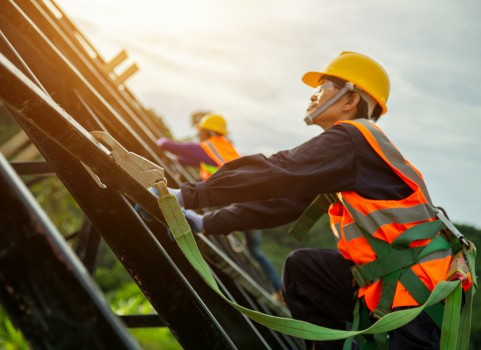


 349,500 Offered Certificates
349,500 Offered Certificates
 24/7 Online Training
24/7 Online Training
 Money Back Guarantee
Money Back Guarantee
 Fully Accredited Courses
Fully Accredited Courses

Created at: 22-02-2025 15:43
When it comes to working at heights, safety is paramount. The risks involved in tasks performed at elevated levels are significant, and having a comprehensive emergency rescue plan is crucial for preventing accidents and ensuring timely responses should they occur. This blog delves into the essential aspects of emergency rescue planning, including self-rescue techniques, employer responsibilities, and best practices for emergency response procedures.
Effective emergency rescue planning is the backbone of workplace safety in environments where working at heights is a common practice. The potential for falls or accidents necessitates that both employers and workers are prepared to manage emergencies as they arise. Without an emergency plan, even the most thorough Working at Heights training falls short.
Workers trained in self-rescue techniques are better equipped to react quickly and effectively when emergencies arise. Mastering these techniques can significantly enhance safety outcomes during unforeseen situations.
The employer plays a critical role in ensuring that all aspects of emergency rescue planning are addressed. Proper preparation goes beyond just training employees; it includes establishing protocols, providing necessary equipment, and conducting drills.
In addition to self-rescue strategies, having a structured emergency response procedure is vital. Effective procedures outline the steps to take when an emergency occurs, detailing the roles of each team member during a rescue.
Real-world scenarios demonstrate the impact of effective emergency rescue planning. Learning from these examples can provide valuable insights into best practices.
At a major construction site, a worker fell approximately 20 feet due to equipment malfunction. Thanks to their prior emergency drills and established self-rescue procedures, the worker managed to stabilize himself using a controlled descent device, allowing his coworkers to assist safely and efficiently. The quick rescue and immediate medical attention prevented serious injuries.
A technician working on a telecommunications tower experienced a safety harness failure. His training in self-rescue allowed him to utilize positioning techniques that minimized injury while waiting for assistance from the ground crew, who had already activated their emergency response protocols.
In conclusion, emergency rescue planning is an essential component of safety when working at heights. Employers have a responsibility to create clear, actionable plans, while workers must be equipped with self-rescue techniques that can be executed in critical moments. By integrating thorough emergency response procedures into regular training and workplace practices, organizations can turn risky environments into safe workplaces.
For more information on Working at Heights training and how to enhance safety in your workplace, visit this course or contact us at [email protected].